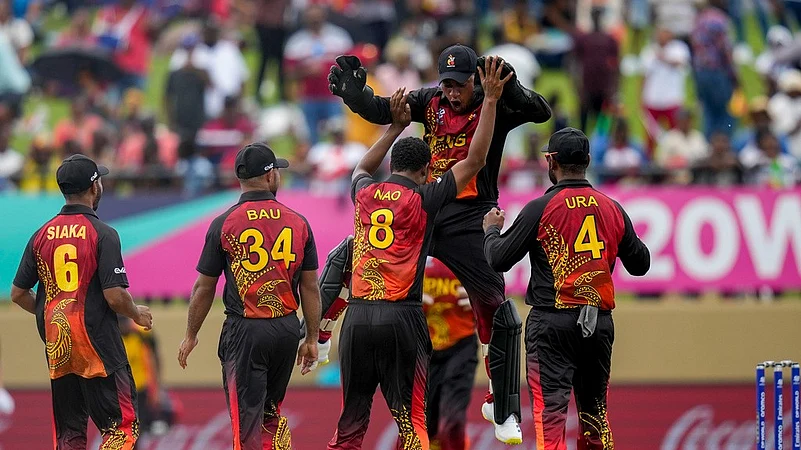In the expansive world of international cricket, the spotlight often falls on the powerhouses like India, Australia, and England. However, beneath that glare exists a vibrant and competitive landscape of Associate nations, where the passion for the game burns just as brightly. Two teams that consistently make waves in this sphere are Papua New Guinea (PNG) and the now-superseded MSA (Malaysian national team). While Malaysia’s official team has transitioned, a statistical comparison between the historical MSA and the current PNG squad offers a fascinating glimpse into the dynamics of cricket’s development. This article delves beyond the win-loss records to explore the individual player statistics, uncovering the stories of resilience, unique playing styles, and the key men who define these teams’ identities on the global stage.
The Contours of Competition: Understanding the Statistical Landscape
Before diving into the numbers, it’s crucial to frame the context. Papua New Guinea, as an ICC Associate Member, has consistently competed in higher-profile tournaments like the ICC T20 World Cup and the Cricket World Cup Challenge League. This exposure against stronger, more established teams inherently shapes their players’ statistics, often testing them against a higher caliber of bowling and batting. The Malaysian national team (MSA), while also an Associate nation, often competed in regional tournaments and ICC World Cricket League lower divisions. This difference in competitive tier means that raw stats are not always directly comparable. A batsman’s average for PNG, built against top-tier Associates and even Full Members, carries a different weight than a similar average for MSA against regional opponents. Therefore, the true story isn’t just in the numbers themselves, but in the caliber of opposition and the pressure of the occasion in which they were achieved.
The Pillars of the Lineup: A Batting Philosophy Comparison
The batting statistics reveal a clear dichotomy in team philosophy and reliance. PNG’s batting has historically been built around a few core, dependable players who anchor the innings. A name like Assad Vala stands out not just as a leader but as a statistical pillar. His batting average and ability to score centuries in one-day cricket underscore a role of responsibility; he is the engine of the lineup, often batting through the innings to allow more aggressive players around him to flourish. In contrast, historical data from MSA often showcased a more collective, if less stable, approach. While they produced talented batsmen, there was frequently a higher turnover at the top of the order, leading to less consistency in individual averages. The Malaysian approach sometimes leaned more on aggressive starts in the T20 format, prioritizing strike rates over longevity, which is reflected in a higher number of players with flashy 30s and 40s but fewer accumulators who could bat deep into the 50-over innings.
The Wicket-Takers: Dissecting Bowling Resources and Strategies
When analyzing the bowling attacks, the contrast becomes even more pronounced. PNG has developed a potent and feared bowling unit, particularly in the T20 format, spearheaded by the leg-spin of Charles Amini and the left-arm orthodox of Vala. Their statistics are remarkable not just for the number of wickets taken but for their incredible economy rates. In the frugal world of Associate cricket, bowlers who can consistently strangle the run-flow while taking wickets are worth their weight in gold, and PNG’s attack is built on this principle. The MSA bowling lineup, while possessing skilled individuals, often relied more on medium-pace and off-spin options. Their statistical profiles might show bowlers who took clusters of wickets in specific conditions but perhaps lacked the variety and mystery of PNG’s attack to consistently dominate across different pitches and against varied opposition. The data suggests PNG’s bowlers have had more success in creating pressure through dot balls, leading to a higher percentage of bowled and caught-out dismissals compared to MSA.
The Glue that Binds: All-Rounder Impact and Fielding Prowess
The true mark of a competitive Associate team often lies in the strength of its all-rounders, and this is an area where PNG holds a significant statistical advantage. Both Assad Vala and Charles Amini are genuine all-rounders, featuring prominently in both the batting and bowling leaderboards. This dual contribution is a massive asset, providing balance to the team and allowing for flexible strategic shifts during a match. For MSA, all-rounders were present but their impact was often more specialized—a bowler who could bat lower down the order, or a batsman who could bowl a few part-time overs. The statistical depth of having multiple top-order players who are also front-line bowlers is a luxury that has propelled PNG forward. Furthermore, while harder to quantify with basic stats, PNG’s fielding, characterized by athleticism and sharp catching, has often been a differentiator, turning potential matches in their favor in a way that might not be as visibly reflected in traditional scorecards but is evident to any observer.
FAQ: PNG vs. MSA Player Stats
Q1: Who is statistically the best player from PNG?
While there are several contenders, Assad Vala is widely regarded as PNG’s most valuable player. His statistics solidify this claim: he is often the team’s leading run-scorer and a top wicket-taker with his left-arm spin, making him a genuine and prolific all-rounder whose contributions are central to the team’s success.
Q2: Did MSA have any standout players who could compete with PNG’s best?
Absolutely. Malaysia has produced several talented cricketers. Players like Virandeep Singh have shown immense promise, with batting averages and all-round capabilities that drew attention in Associate circles. However, the lack of consistent exposure to the same high-level competition as PNG meant that these standout performances were sometimes spread across different players over time, rather than being concentrated in a consistent core group.
Q3: Why are PNG’s player stats generally considered more impressive?
The primary reason is the level of competition. PNG’s status has granted them regular fixtures against teams like Scotland, the Netherlands, Namibia, and even Full Members in global events. Building strong statistics against this level of opposition is inherently more challenging and thus more highly valued than dominating in regional competitions against less-established teams.
Q4: What is the biggest takeaway from comparing these two teams?
The comparison highlights that sustained success at the Associate level is built on a foundation of player consistency and a balanced team structure. PNG’s model of developing a core group of multi-skilled players who compete regularly on a global stage has proven more effective for building impressive individual and team statistics than a system with more player turnover and less consistent high-level competition.
Conclusion
The statistical journey through the players of Papua New Guinea and Malaysia is more than a simple comparison of averages and strike rates. It is a narrative about opportunity, structure, and the building of a cricketing identity. PNG’s numbers tell a story of a team that has consolidated its talent, fostering a group of battle-hardened cricketers whose stats are earned on the world stage. The historical data from MSA, while reflective of a passionate cricket community, illustrates the challenges of breaking through without the same consistent platform. Ultimately, these statistics are a testament to the players from both nations who strive for excellence away from the glamour of international headlines, and they serve as a crucial benchmark for the growth and evolving narrative of cricket beyond its traditional heartlands.

